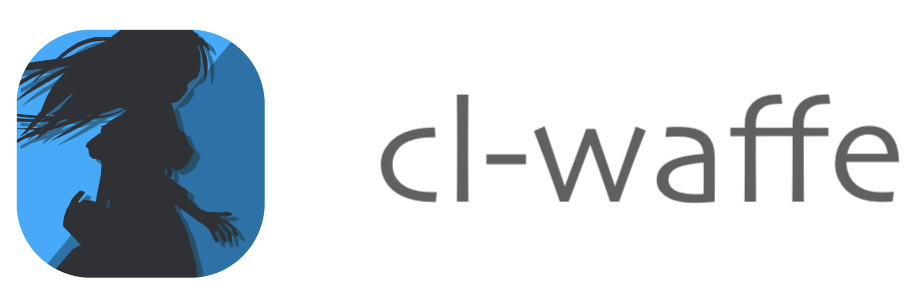
cl-waffe2
[Experimental] Graph and Tensor Abstraction for Deep Learning all in Common Lisp
Stars: 119
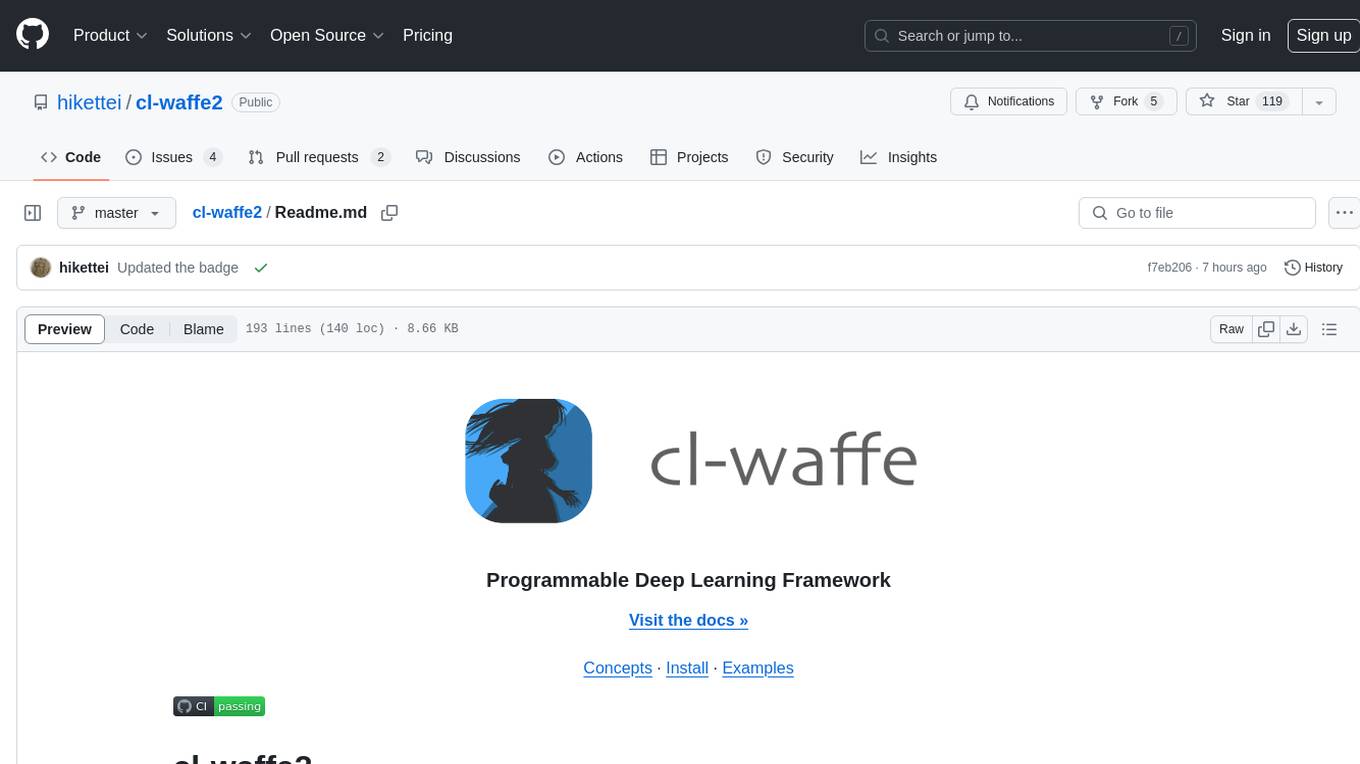
cl-waffe2 is an experimental deep learning framework in Common Lisp, providing fast, systematic, and customizable matrix operations, reverse mode tape-based Automatic Differentiation, and neural network model building and training features accelerated by a JIT Compiler. It offers abstraction layers, extensibility, inlining, graph-level optimization, visualization, debugging, systematic nodes, and symbolic differentiation. Users can easily write extensions and optimize their networks without overheads. The framework is designed to eliminate barriers between users and developers, allowing for easy customization and extension.
README:
Visit the docs »
Concepts
·
Install
·
Examples
⚠️ cl-waffe2 is still in the experimental stage. Things are subject to change, and APIs can be changed without warnings. DO NOT USE CL-WAFFE2 IN YOUR PRODUCT.I actually have a repository cl-waffe(DEPRECATED UNSUPPORTED!) with a similar name. Note that cl-waffe2 is the latest one and all features are inherited from the old one.
cl-waffe2 provides fast, systematic, easy to optimize, customizable, device independent abstract matrix operations, and reverse mode tape-based Automatic Differentiation on Common Lisp. Plus, we also provide features for building and training neural network models, accelerated by a JIT Compiler.
Roughly speaking, this is a framework for the graph and tensor abstraction without overheads. All features provided here can be extended by users without exceptions - and with minimal code. In fact, cl-waffe2 is designed as the truly easiest framework to write extensions by users. There is no barrier between users and developers. There is no restriction imposed by the framework ignoring the developing language is limited to Common Lisp.
As of this writing, its abstraction layers are almost reaching the goals and working enough, but there is still a serious lack of backend functionality, and documentation. Contributions are welcome and I would appreciate if somebody who is interested in by project contact me: hikettei.
- Abstraction cl-waffe2 brings AbstractTensor (and AbstractNode!) to Common Lisp.
- Extensible All operations can be reimplemented with any matrix operation libraries you like! Plus, AbstractNode guarantees that no code rewriting is needed when changing devices.
- Inlining Anyone can write an optimized loop calling foreign libraries; an order is collapsed and shuffled depending on the ranks and offsets.
- Graph-Level Optimization cl-waffe2 provides a powerful abstract graph optimization tool that can be used on any devices. For example, it optimizes the locality of memory, and make operations in-place as much as possible.
-
Visualize Super easy to know the bottleneck in your network, because a
proceed-benchfunction profiles every instruction. - Debugging cl-waffe2 is enough clever by not only detecting all Shaping-Error before the execution but it also suggests alternatives! In addition, all objects in cl-waffe2 are nicely rendered on your REPL.
- Systematic Nodes AbstractNodes and Models are based on small and elegant macros.
- Symbolic Differentiation In the first place, cl-waffe2 does not create nodes that are later modified. Compiler macros eliminate functions producing such nodes.
As the simplest example, the build function traces and compiles the network from the endpoints of the computation nodes.
Example1. Compiling nodes
(let ((a (make-input `(A B) :A))
(b (make-input `(A B) :B)))
(let ((model (build (!sum (!mul a b)) :inputs `(:A :B))))
(print model)
;; model is a compiled function: f(a b)
(forward model (randn `(3 3)) (randn `(3 3)))))
;;<Compiled-Composite(allocated-p=NIL)
;; forward : forward(model A B) -> CPUTENSOR{FLOAT}(1 1)
;; backward : backward(model) -> t
;; memory-pool : two tensor(s)
;; L {8.0e-6+((A B) x 4.0e-6)}MB
;; inputs:
;; A -> (A B)
;; B -> (A B)
;;>
;;{CPUTENSOR[float] :shape (1 1) -> :view (<(BROADCAST 1)> <(BROADCAST 1)>) -> :visible-shape (1 1) :named ChainTMP646587
;; ((1.0858848))
;; :facet :input
;; :requires-grad NIL
;; :backward NIL} The advantages of using Common Lisp are numerous:
- The shape of tensors is not limited to numbers, but can also include symbols and even S-expressions!
- Automatic Generation of Iterators, ShapeError, etc.
- Works as a Domain Specific Language for Deep Learning embedded in Common Lisp
Example2. MLP Model
;; From https://github.com/hikettei/cl-waffe2/blob/master/examples/mnist/mlp.lisp
(defsequence MLP (in-features hidden-dim out-features
&key (activation #'!relu))
"Three Layers MLP Model"
(LinearLayer in-features hidden-dim)
(asnode activation)
(LinearLayer hidden-dim hidden-dim)
(asnode activation)
(LinearLayer hidden-dim out-features))
(defun build-mlp-model (in-class out-class &key (hidden-size 256) (activation #'!relu) (lr 1e-3))
(let* ((mlp (MLP in-class hidden-size out-class :activation activation))
(lazy-loss (criterion #'softmax-cross-entropy
(call mlp
(make-input `(batch-size ,in-class) :X))
(make-input `(batch-size ,out-class) :Y)
:reductions (list #'!sum #'->scal)))
(model (build lazy-loss :inputs `(:X :Y))))
(mapc (hooker x (Adam x :lr lr)) (model-parameters model))
(values model mlp)))
(defun step-train-mlp (model x y)
(let ((act-loss (forward model x y)))
(backward model)
(mapc #'call-optimizer! (model-parameters model))
(/ (tensor-vec act-loss) 100)))
(defmethod accuracy ((model MLP) x y)
(let* ((out (!argmax (call model x)))
(label (!argmax y))
(total (proceed (->scal (!sum (A=B out label))))))
(float (/ (tensor-vec total) (nth 0 (shape out))))))Example3. reshape and transform
(!reshape (make-input `(N C H W) nil) (~ N C H W -> (* N C H) W))
(%transform (ax+b `(3) 1 0)[i] -> [~ i])We also provide example projects here!
Don't underestimate the power of lazy evaluation. Nodes are first converted to fully optimized IRs before doing forward and backward propagations.
Since cl-waffe2 is still under development, there are still many optimization techniques remains to be implemented. Even these benchmarks were measured under single-core but shows enough performance!
optimizers=Adam, hidden_size=256
| n_epoch | cl-waffe2 | Keras | PyTorch | JAX |
|---|---|---|---|---|
| 1 | 3.111s | 3.662s | 3.418 | 4.039s |
| 10 | 32.437s | 31.352s | 28.403s | 30.801s |
| 100 | 304.864s | 274.854s | 338.031s | 275.875s |
optimizers=Adam hidden=512
| n_epoch | cl-waffe2 | Keras | PyTorch | JAX |
|---|---|---|---|---|
| 1 | 6.075s | 7.55s | 7.29s | 6.90s |
| 10 | 61.703s | 56.283s | 51.140s | 65.682s |
(Coming Soon...)
(Coming Soon...)
-
All comments on this Reddit post: Does anyone have any interest in my deep-learning framework?.
-
digikar99 for giving me intriguing perspectives on some semantics and the publication of a large number of valuable references.
-
Some of the algorithms implemented within the source code are referenced below:
-
Marsaglia, G., & Tsang, W. W. (2000). The ziggurat method for generating random variables. Journal of statistical software.
-
Previous works of JIT Compiler for Deep Learning:
-
See also my reading list: https://github.com/hikettei/cl-waffe2/issues/47
For Tasks:
Click tags to check more tools for each tasksFor Jobs:
Alternative AI tools for cl-waffe2
Similar Open Source Tools

cl-waffe2
cl-waffe2 is an experimental deep learning framework in Common Lisp, providing fast, systematic, and customizable matrix operations, reverse mode tape-based Automatic Differentiation, and neural network model building and training features accelerated by a JIT Compiler. It offers abstraction layers, extensibility, inlining, graph-level optimization, visualization, debugging, systematic nodes, and symbolic differentiation. Users can easily write extensions and optimize their networks without overheads. The framework is designed to eliminate barriers between users and developers, allowing for easy customization and extension.
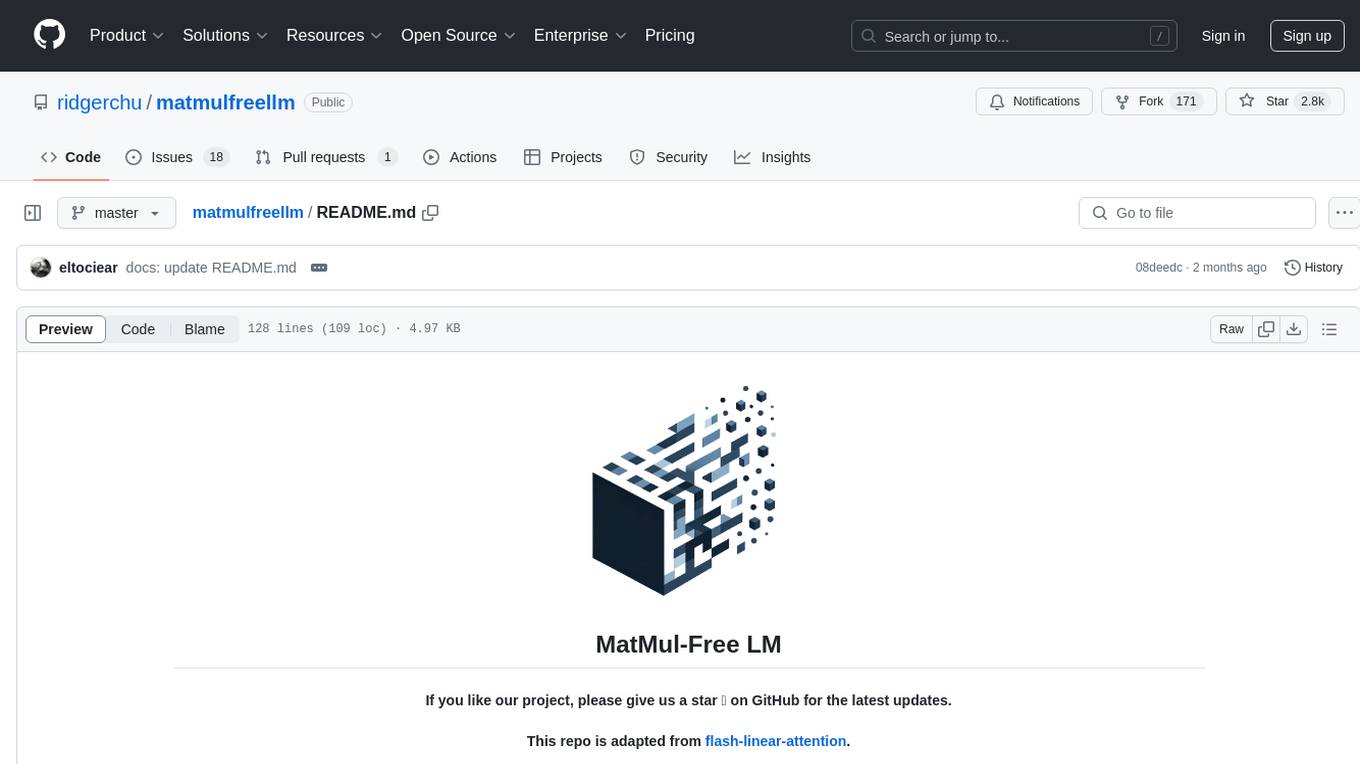
matmulfreellm
MatMul-Free LM is a language model architecture that eliminates the need for Matrix Multiplication (MatMul) operations. This repository provides an implementation of MatMul-Free LM that is compatible with the 🤗 Transformers library. It evaluates how the scaling law fits to different parameter models and compares the efficiency of the architecture in leveraging additional compute to improve performance. The repo includes pre-trained models, model implementations compatible with 🤗 Transformers library, and generation examples for text using the 🤗 text generation APIs.
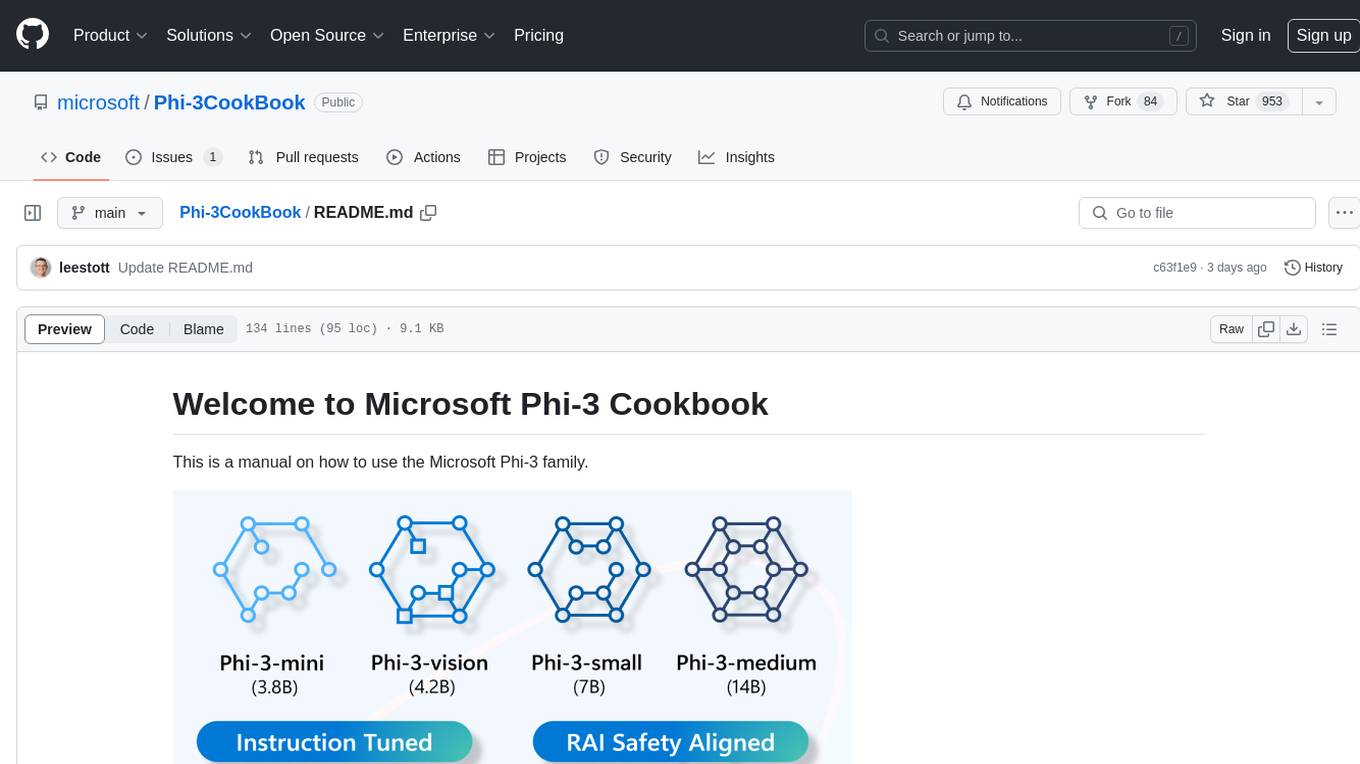
Phi-3CookBook
Phi-3CookBook is a manual on how to use the Microsoft Phi-3 family, which consists of open AI models developed by Microsoft. The Phi-3 models are highly capable and cost-effective small language models, outperforming models of similar and larger sizes across various language, reasoning, coding, and math benchmarks. The repository provides detailed information on different Phi-3 models, their performance, availability, and usage scenarios across different platforms like Azure AI Studio, Hugging Face, and Ollama. It also covers topics such as fine-tuning, evaluation, and end-to-end samples for Phi-3-mini and Phi-3-vision models, along with labs, workshops, and contributing guidelines.
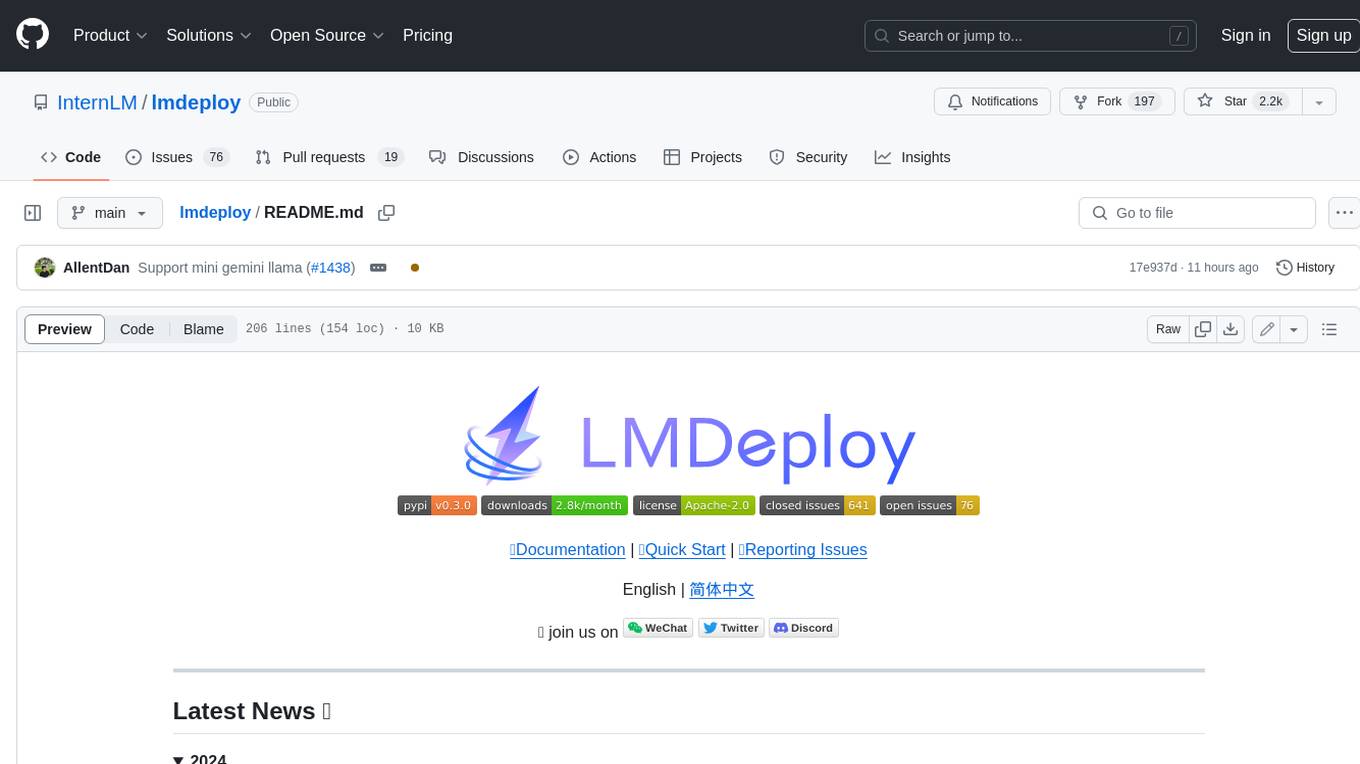
lmdeploy
LMDeploy is a toolkit for compressing, deploying, and serving LLM, developed by the MMRazor and MMDeploy teams. It has the following core features: * **Efficient Inference** : LMDeploy delivers up to 1.8x higher request throughput than vLLM, by introducing key features like persistent batch(a.k.a. continuous batching), blocked KV cache, dynamic split&fuse, tensor parallelism, high-performance CUDA kernels and so on. * **Effective Quantization** : LMDeploy supports weight-only and k/v quantization, and the 4-bit inference performance is 2.4x higher than FP16. The quantization quality has been confirmed via OpenCompass evaluation. * **Effortless Distribution Server** : Leveraging the request distribution service, LMDeploy facilitates an easy and efficient deployment of multi-model services across multiple machines and cards. * **Interactive Inference Mode** : By caching the k/v of attention during multi-round dialogue processes, the engine remembers dialogue history, thus avoiding repetitive processing of historical sessions.
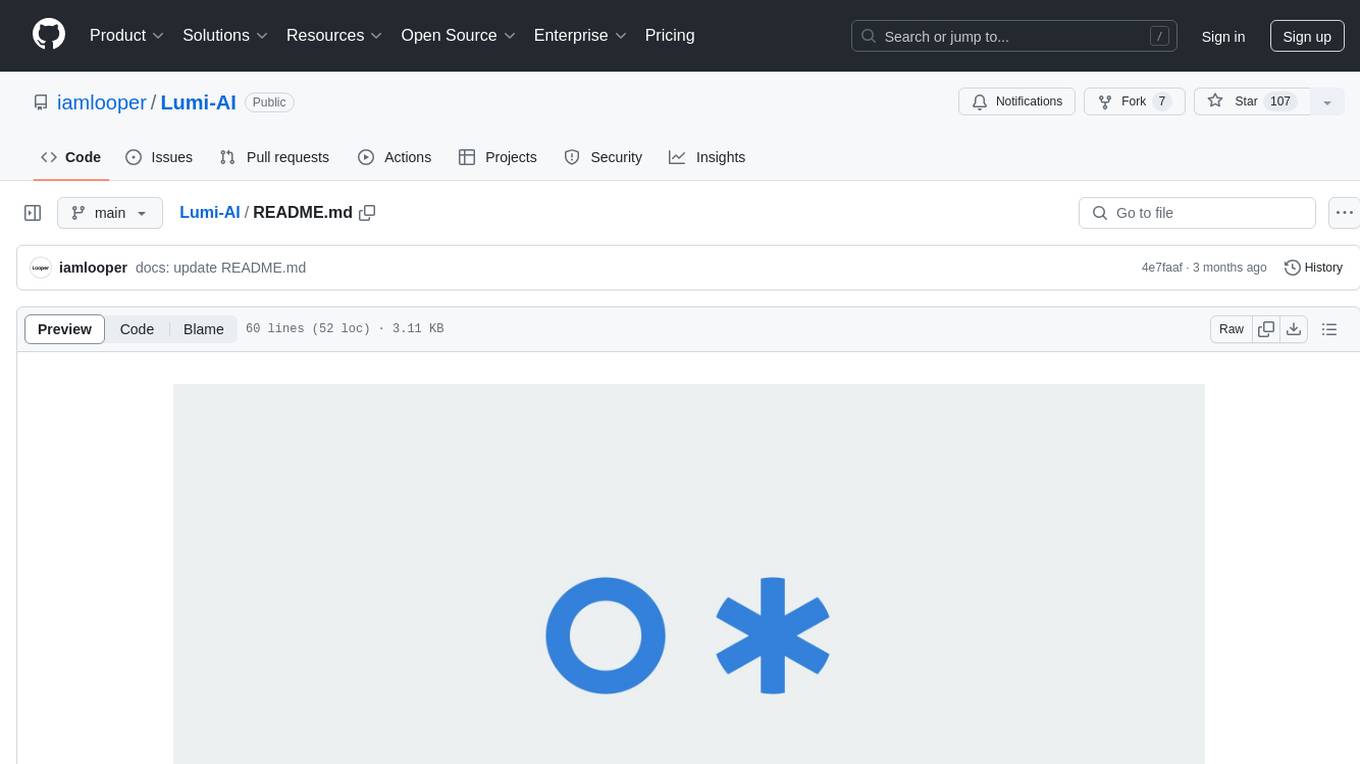
Lumi-AI
Lumi AI is a friendly AI sidekick with a human-like personality that offers features like file upload and analysis, web search, local chat storage, custom instructions, changeable conversational style, enhanced context retention, voice query input, and various tools. The project has been developed with contributions from a team of developers, designers, and testers, and is licensed under Apache 2.0 and MIT licenses.
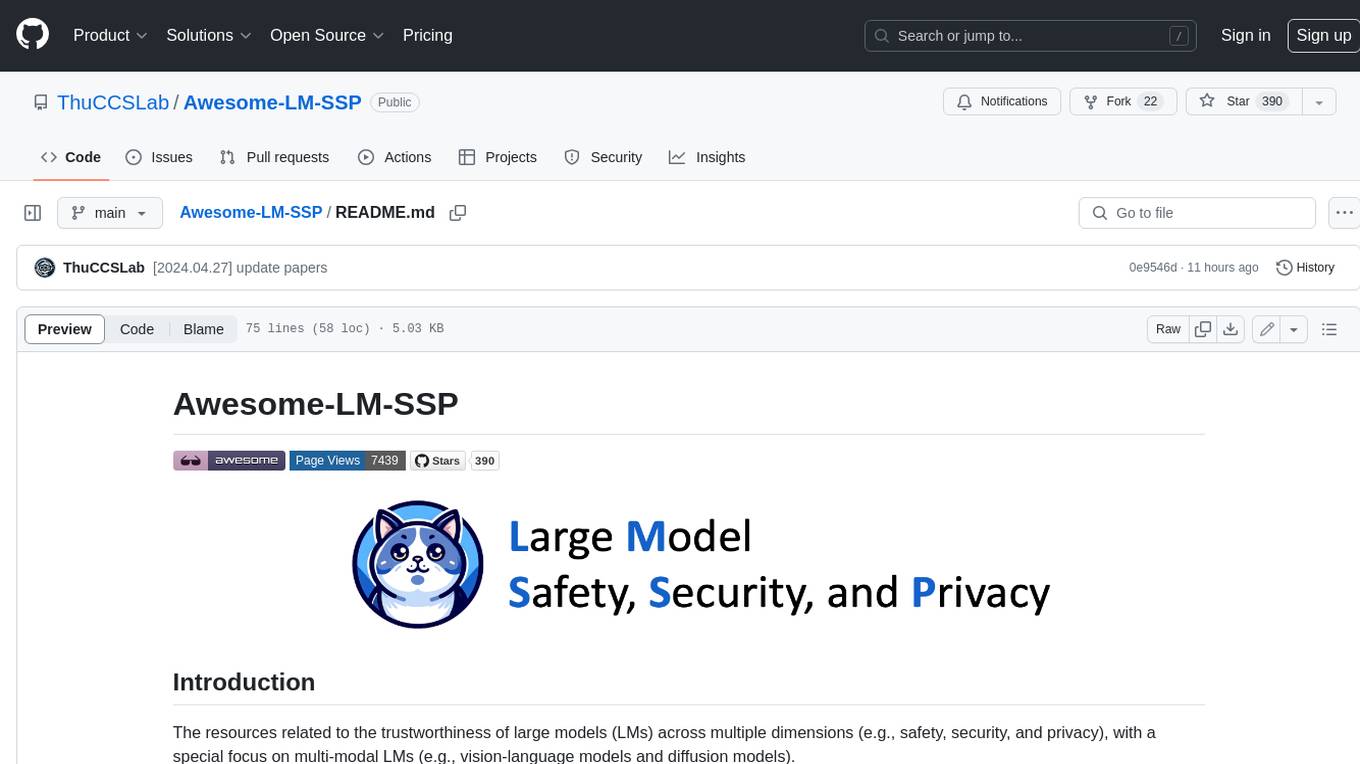
Awesome-LM-SSP
The Awesome-LM-SSP repository is a collection of resources related to the trustworthiness of large models (LMs) across multiple dimensions, with a special focus on multi-modal LMs. It includes papers, surveys, toolkits, competitions, and leaderboards. The resources are categorized into three main dimensions: safety, security, and privacy. Within each dimension, there are several subcategories. For example, the safety dimension includes subcategories such as jailbreak, alignment, deepfake, ethics, fairness, hallucination, prompt injection, and toxicity. The security dimension includes subcategories such as adversarial examples, poisoning, and system security. The privacy dimension includes subcategories such as contamination, copyright, data reconstruction, membership inference attacks, model extraction, privacy-preserving computation, and unlearning.
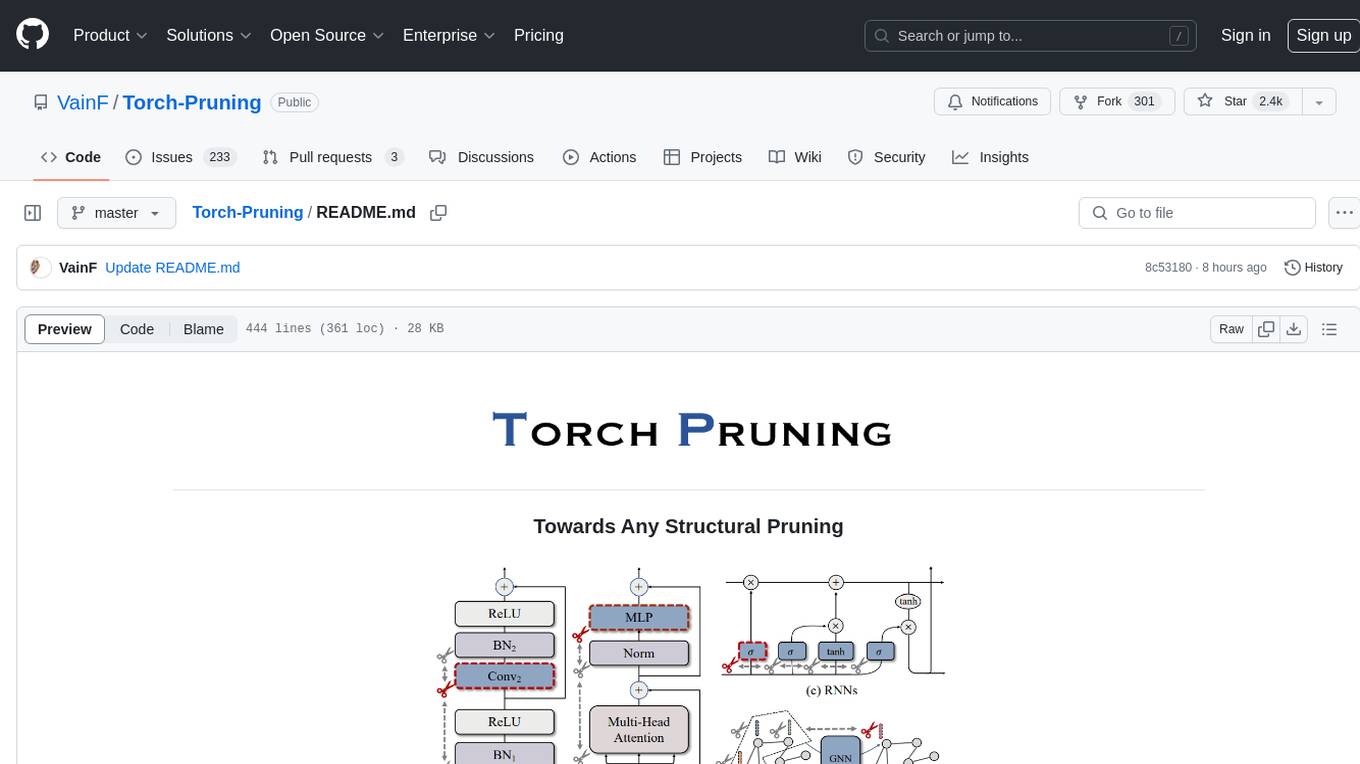
Torch-Pruning
Torch-Pruning (TP) is a library for structural pruning that enables pruning for a wide range of deep neural networks. It uses an algorithm called DepGraph to physically remove parameters. The library supports pruning off-the-shelf models from various frameworks and provides benchmarks for reproducing results. It offers high-level pruners, dependency graph for automatic pruning, low-level pruning functions, and supports various importance criteria and modules. Torch-Pruning is compatible with both PyTorch 1.x and 2.x versions.
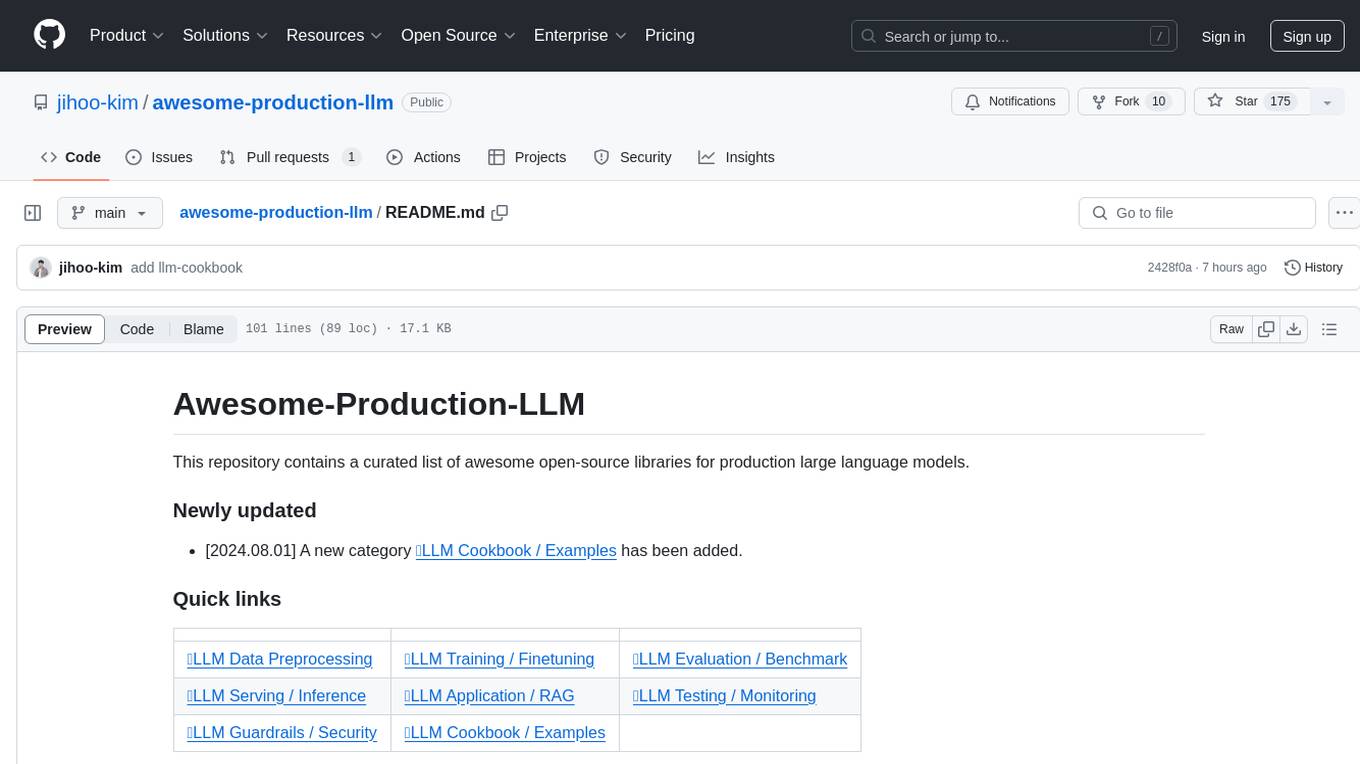
awesome-production-llm
This repository is a curated list of open-source libraries for production large language models. It includes tools for data preprocessing, training/finetuning, evaluation/benchmarking, serving/inference, application/RAG, testing/monitoring, and guardrails/security. The repository also provides a new category called LLM Cookbook/Examples for showcasing examples and guides on using various LLM APIs.

aiomysql
aiomysql is a driver for accessing a MySQL database from the asyncio framework. It is based on PyMySQL and aims to provide the same API and functionality. Internally, aiomysql is a modified version of PyMySQL with async IO calls. It supports SQLAlchemy integration and offers a familiar experience for aiopg users.
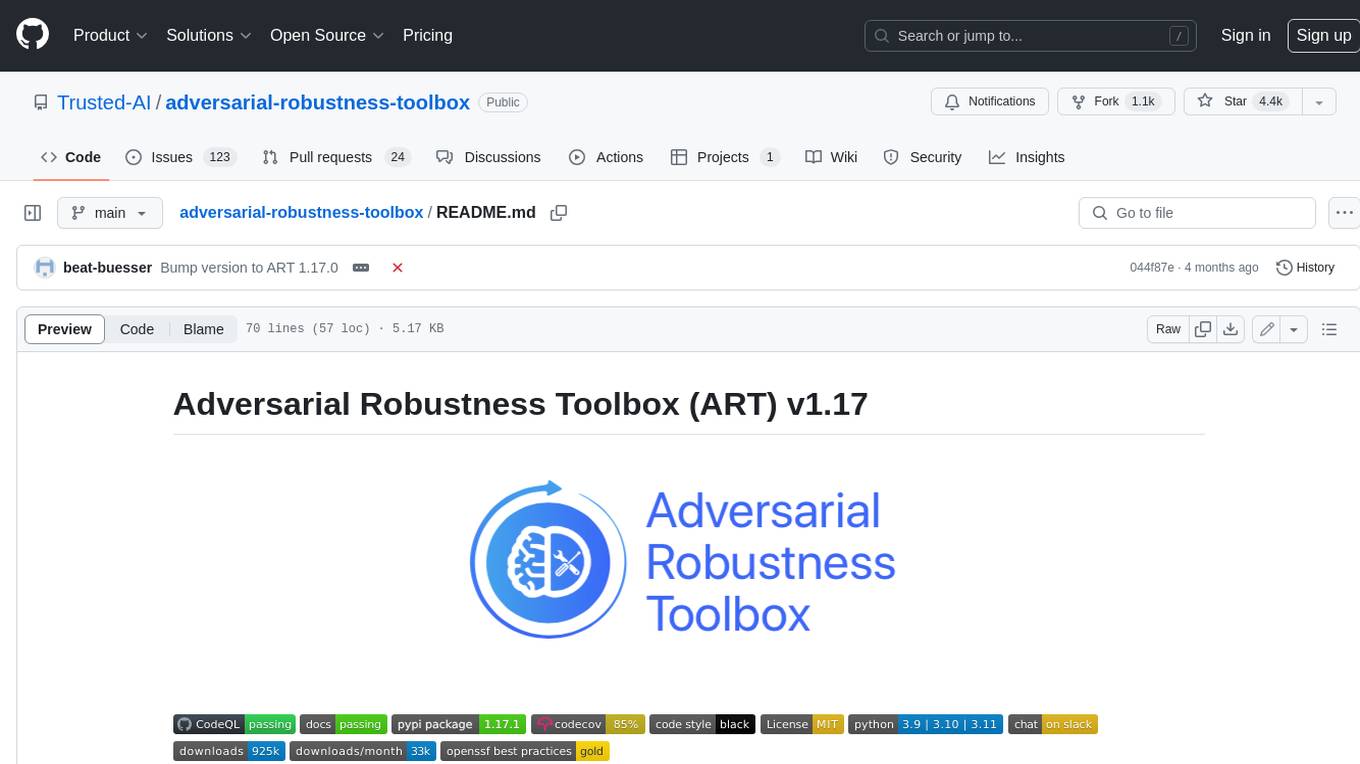
adversarial-robustness-toolbox
Adversarial Robustness Toolbox (ART) is a Python library for Machine Learning Security. ART provides tools that enable developers and researchers to defend and evaluate Machine Learning models and applications against the adversarial threats of Evasion, Poisoning, Extraction, and Inference. ART supports all popular machine learning frameworks (TensorFlow, Keras, PyTorch, MXNet, scikit-learn, XGBoost, LightGBM, CatBoost, GPy, etc.), all data types (images, tables, audio, video, etc.) and machine learning tasks (classification, object detection, speech recognition, generation, certification, etc.).

Awesome-RL-based-LLM-Reasoning
This repository is dedicated to enhancing Language Model (LLM) reasoning with reinforcement learning (RL). It includes a collection of the latest papers, slides, and materials related to RL-based LLM reasoning, aiming to facilitate quick learning and understanding in this field. Starring this repository allows users to stay updated and engaged with the forefront of RL-based LLM reasoning.
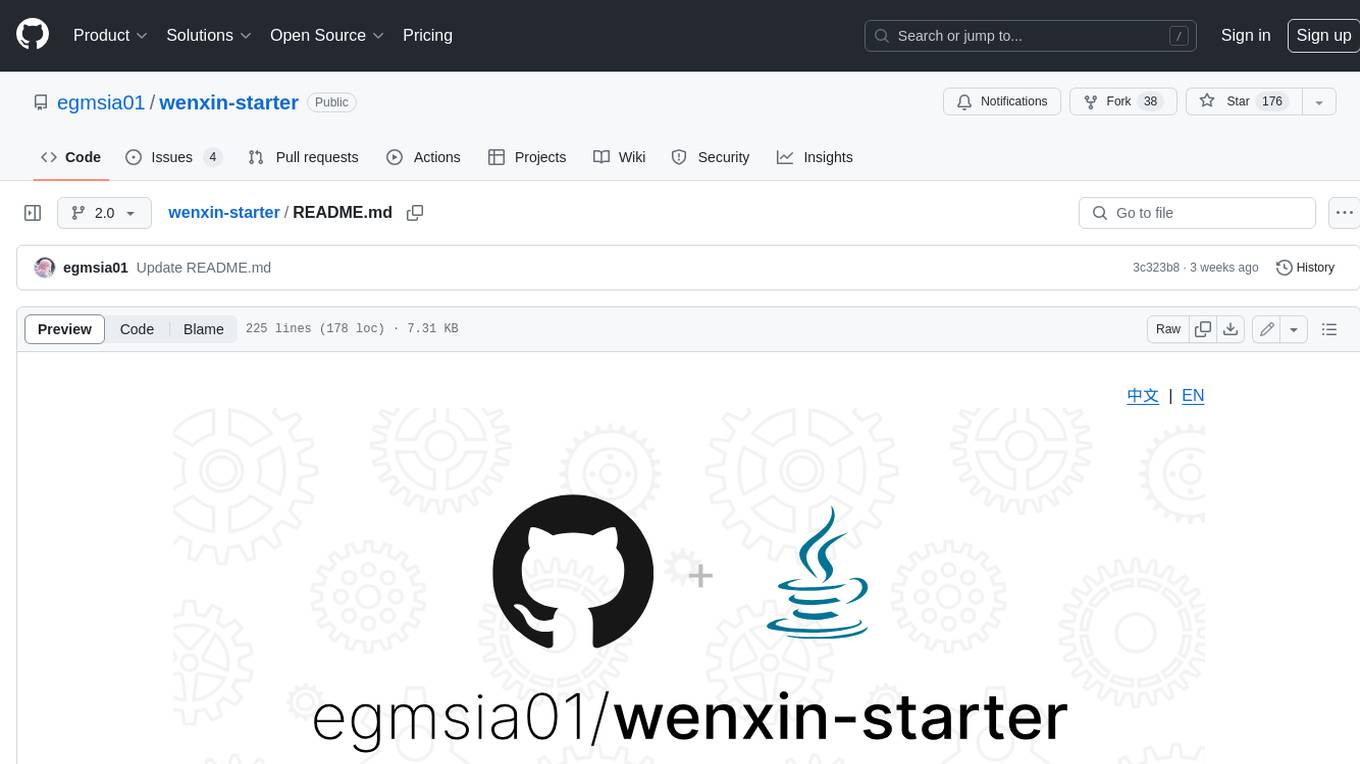
wenxin-starter
WenXin-Starter is a spring-boot-starter for Baidu's "Wenxin Qianfan WENXINWORKSHOP" large model, which can help you quickly access Baidu's AI capabilities. It fully integrates the official API documentation of Wenxin Qianfan. Supports text-to-image generation, built-in dialogue memory, and supports streaming return of dialogue. Supports QPS control of a single model and supports queuing mechanism. Plugins will be added soon.
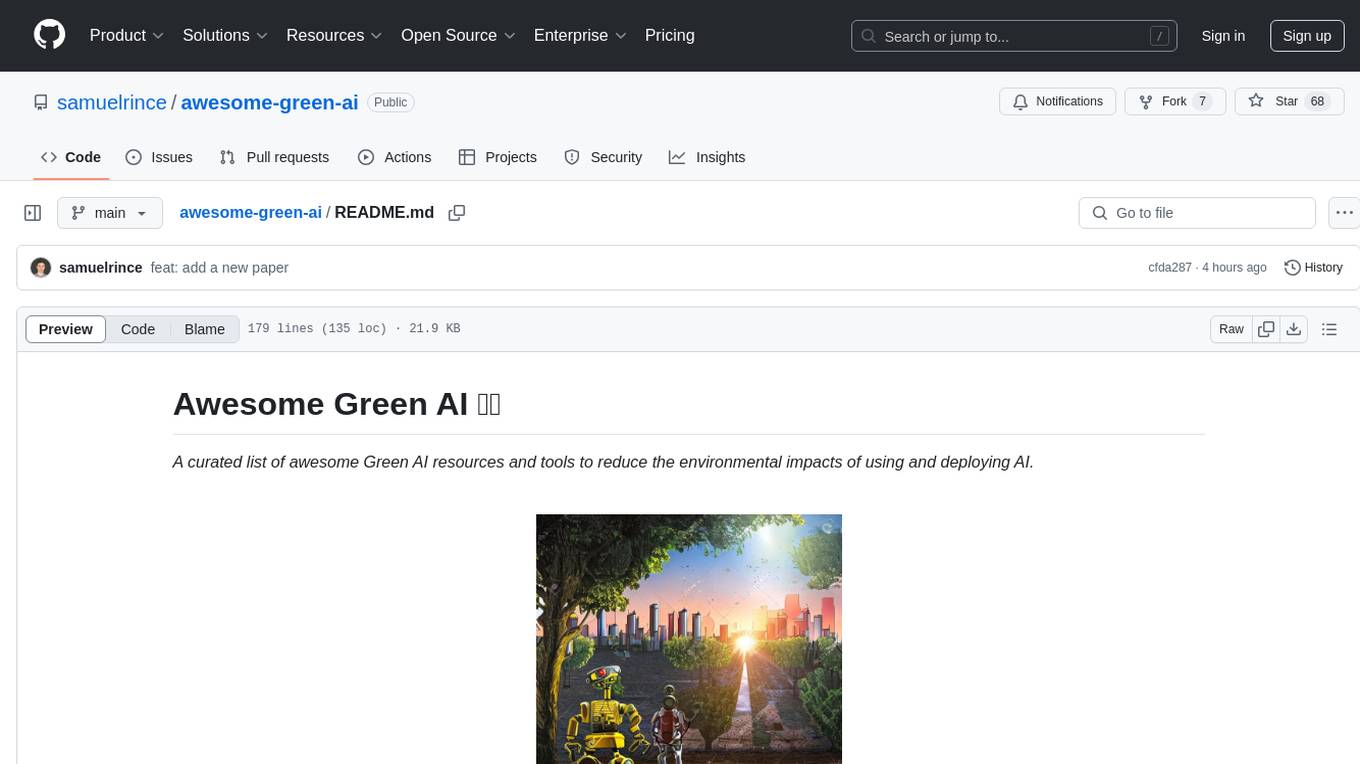
awesome-green-ai
Awesome Green AI is a curated list of resources and tools aimed at reducing the environmental impacts of using and deploying AI. It addresses the carbon footprint of the ICT sector, emphasizing the importance of AI in reducing environmental impacts beyond GHG emissions and electricity consumption. The tools listed cover code-based tools for measuring environmental impacts, monitoring tools for power consumption, optimization tools for energy efficiency, and calculation tools for estimating environmental impacts of algorithms and models. The repository also includes leaderboards, papers, survey papers, and reports related to green AI and environmental sustainability in the AI sector.
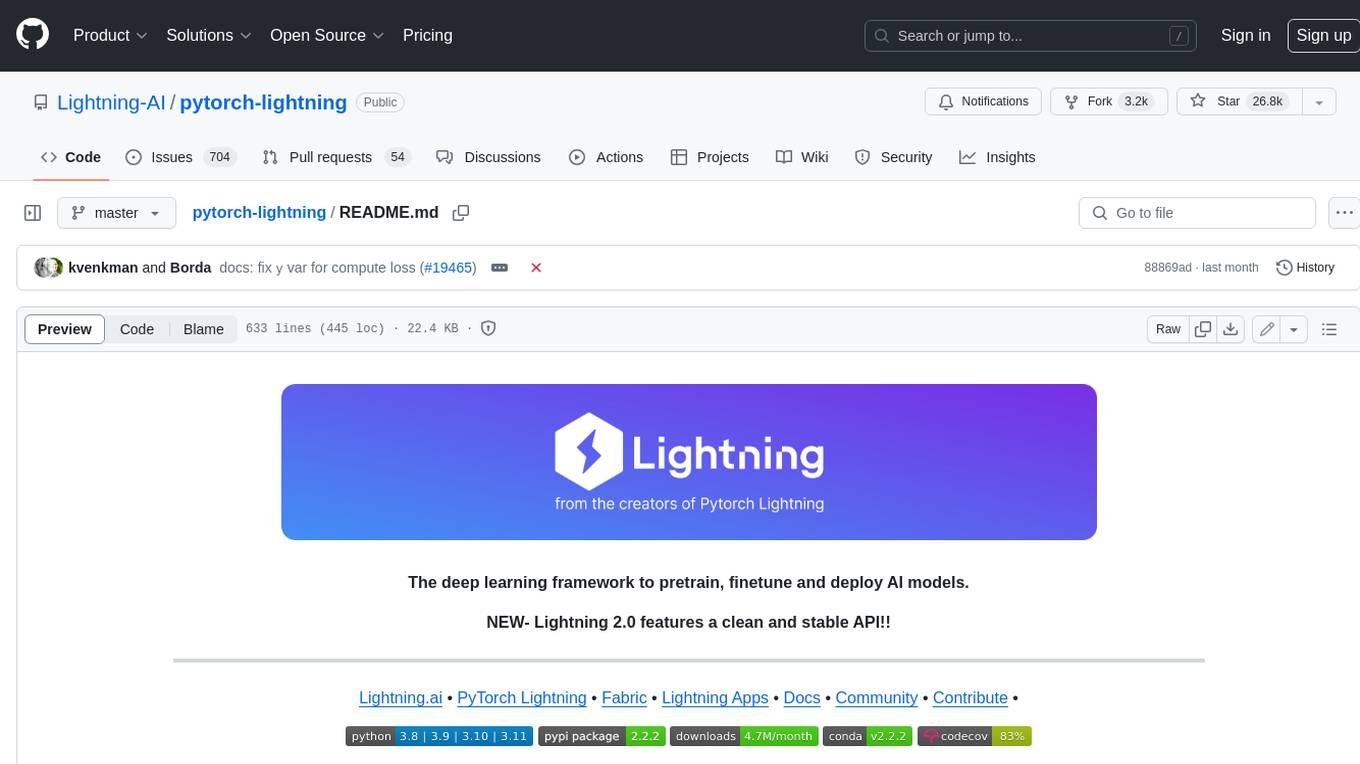
pytorch-lightning
PyTorch Lightning is a framework for training and deploying AI models. It provides a high-level API that abstracts away the low-level details of PyTorch, making it easier to write and maintain complex models. Lightning also includes a number of features that make it easy to train and deploy models on multiple GPUs or TPUs, and to track and visualize training progress. PyTorch Lightning is used by a wide range of organizations, including Google, Facebook, and Microsoft. It is also used by researchers at top universities around the world. Here are some of the benefits of using PyTorch Lightning: * **Increased productivity:** Lightning's high-level API makes it easy to write and maintain complex models. This can save you time and effort, and allow you to focus on the research or business problem you're trying to solve. * **Improved performance:** Lightning's optimized training loops and data loading pipelines can help you train models faster and with better performance. * **Easier deployment:** Lightning makes it easy to deploy models to a variety of platforms, including the cloud, on-premises servers, and mobile devices. * **Better reproducibility:** Lightning's logging and visualization tools make it easy to track and reproduce training results.
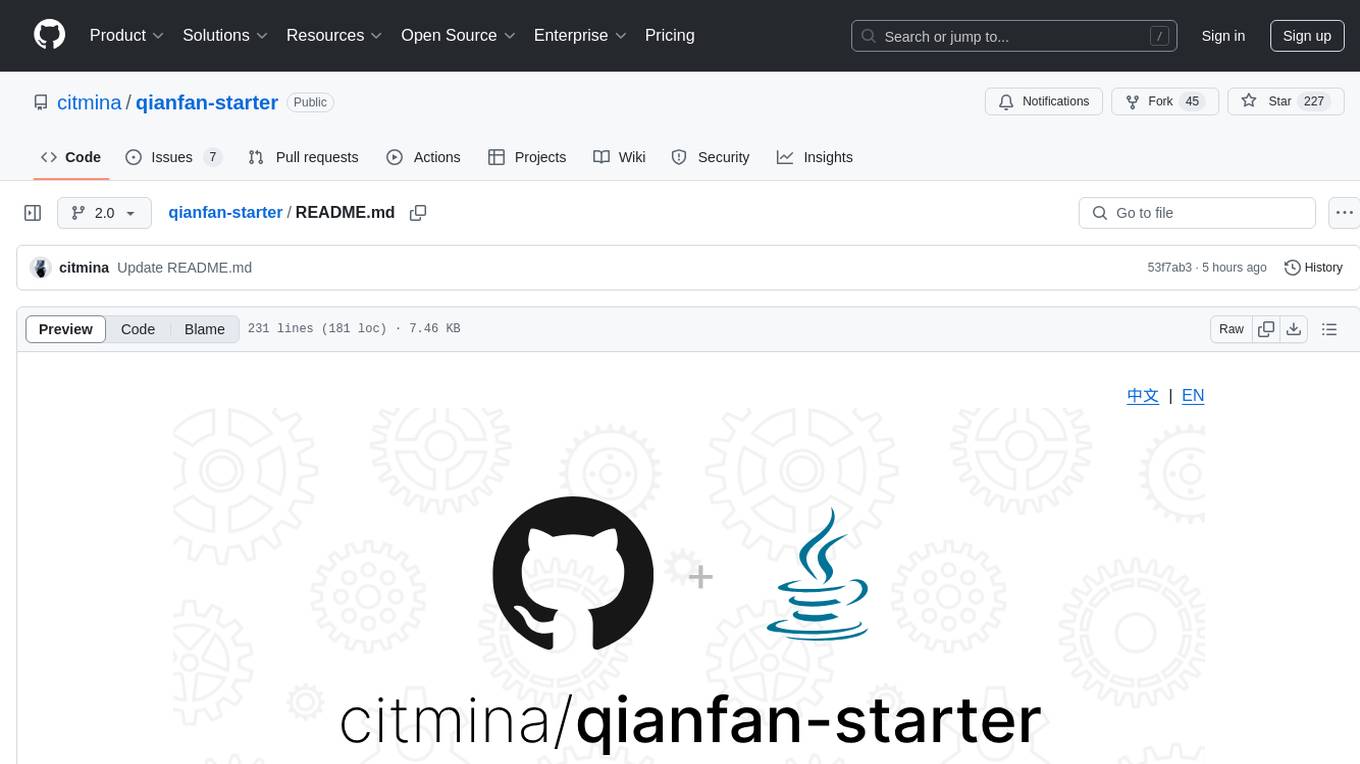
qianfan-starter
WenXin-Starter is a spring-boot-starter for Baidu's 'WenXin Workshop' large model, facilitating quick integration of Baidu's AI capabilities. It provides complete integration with WenXin Workshop's official API documentation, supports WenShengTu, built-in conversation memory, and supports conversation streaming. It also supports QPS control for individual models and queuing mechanism, with upcoming plugin support.
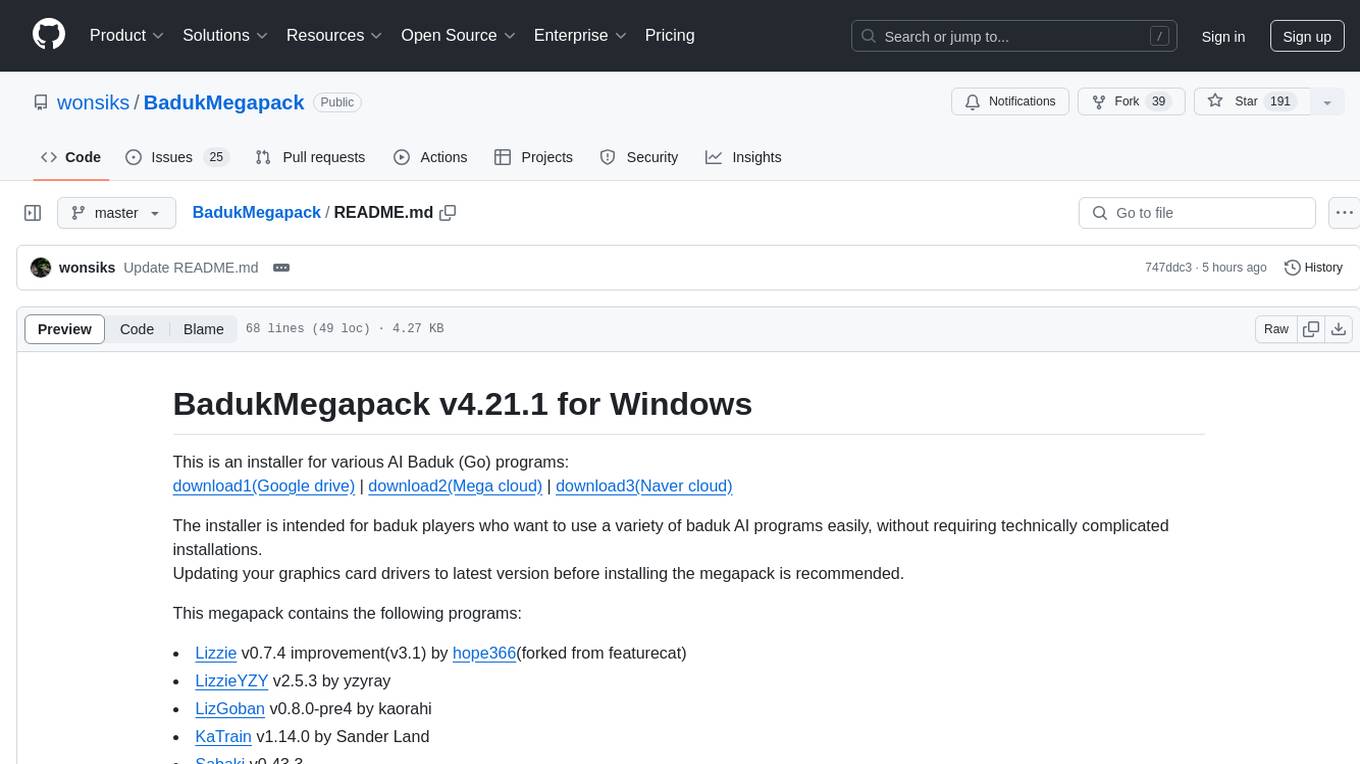
BadukMegapack
BadukMegapack is an installer for various AI Baduk (Go) programs, designed for baduk players who want to easily access and use a variety of baduk AI programs without complex installations. The megapack includes popular programs like Lizzie, KaTrain, Sabaki, KataGo, LeelaZero, and more, along with weight files for different AI models. Users can update their graphics card drivers before installation for optimal performance.
For similar tasks

cl-waffe2
cl-waffe2 is an experimental deep learning framework in Common Lisp, providing fast, systematic, and customizable matrix operations, reverse mode tape-based Automatic Differentiation, and neural network model building and training features accelerated by a JIT Compiler. It offers abstraction layers, extensibility, inlining, graph-level optimization, visualization, debugging, systematic nodes, and symbolic differentiation. Users can easily write extensions and optimize their networks without overheads. The framework is designed to eliminate barriers between users and developers, allowing for easy customization and extension.
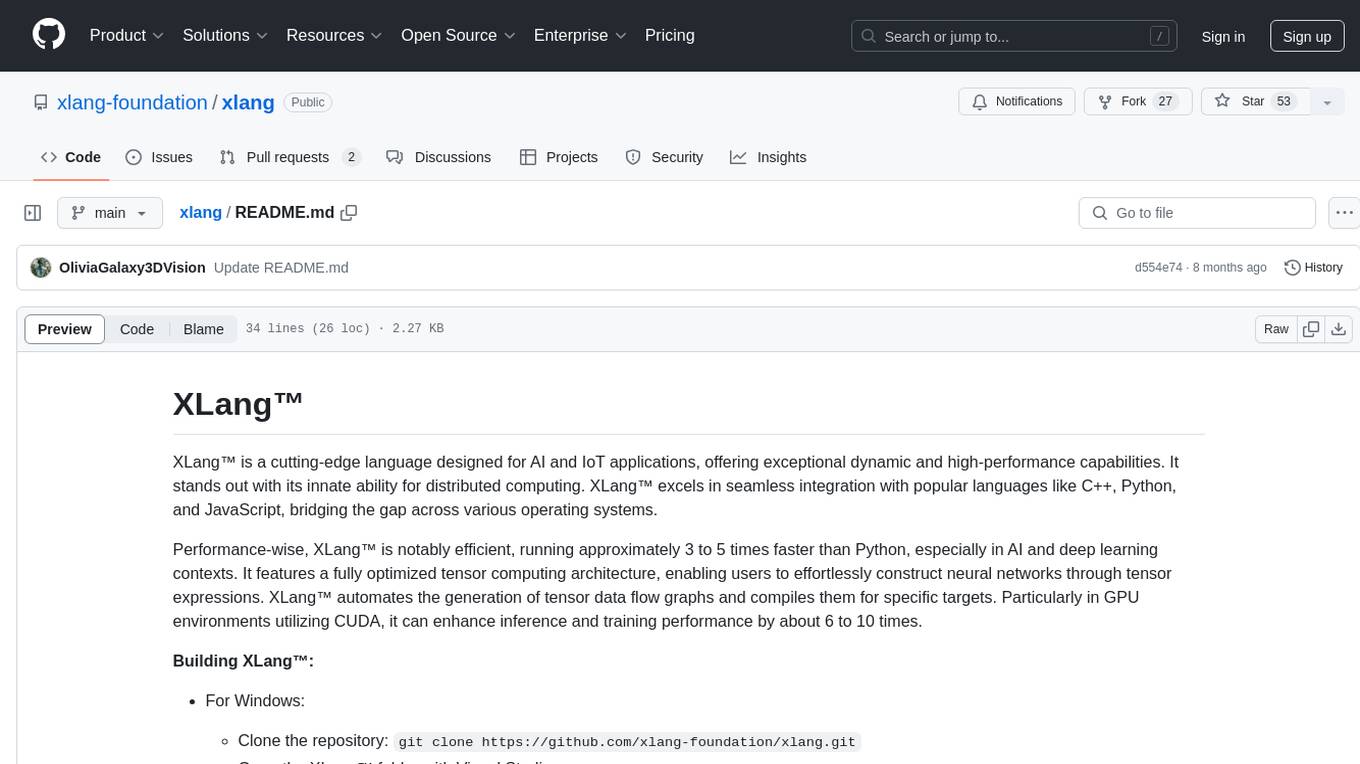
xlang
XLang™ is a cutting-edge language designed for AI and IoT applications, offering exceptional dynamic and high-performance capabilities. It excels in distributed computing and seamless integration with popular languages like C++, Python, and JavaScript. Notably efficient, running 3 to 5 times faster than Python in AI and deep learning contexts. Features optimized tensor computing architecture for constructing neural networks through tensor expressions. Automates tensor data flow graph generation and compilation for specific targets, enhancing GPU performance by 6 to 10 times in CUDA environments.
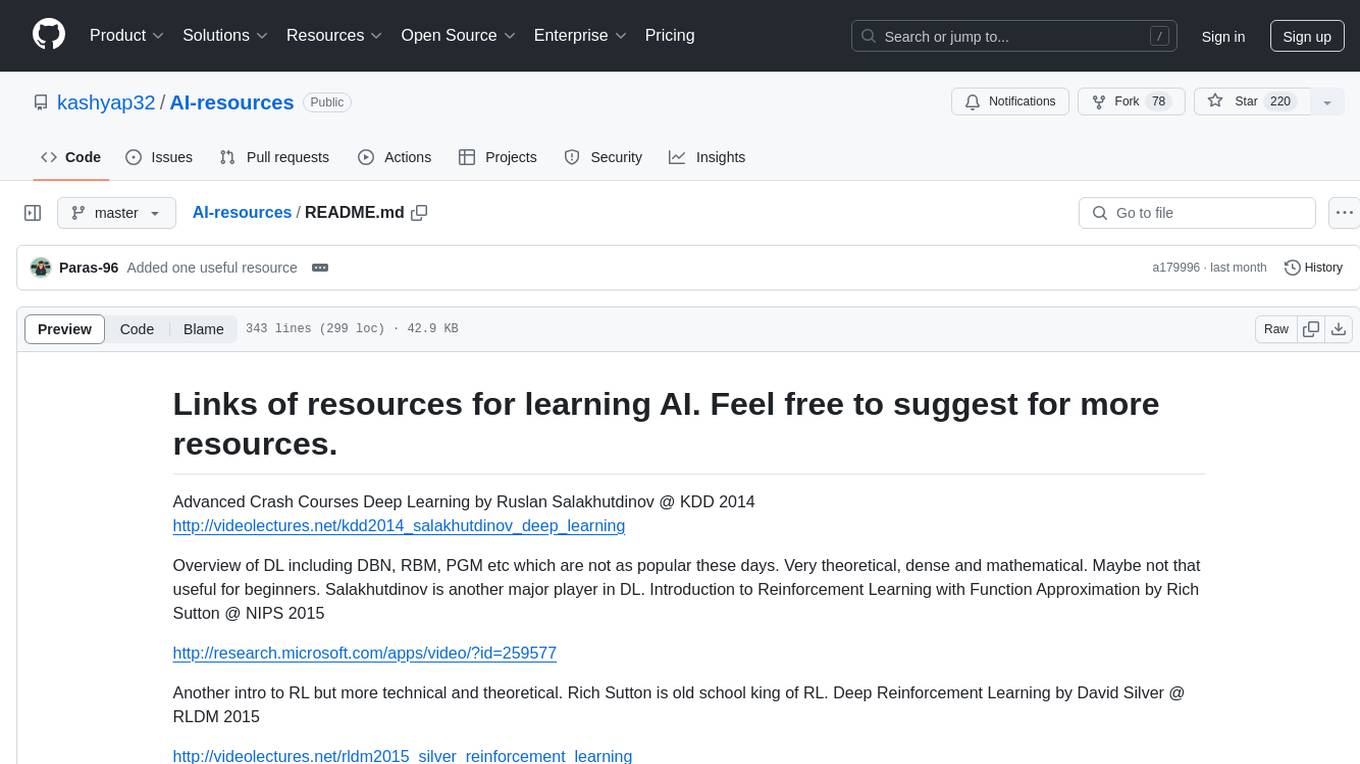
AI-resources
AI-resources is a repository containing links to various resources for learning Artificial Intelligence. It includes video lectures, courses, tutorials, and open-source libraries related to deep learning, reinforcement learning, machine learning, and more. The repository categorizes resources for beginners, average users, and advanced users/researchers, providing a comprehensive collection of materials to enhance knowledge and skills in AI.
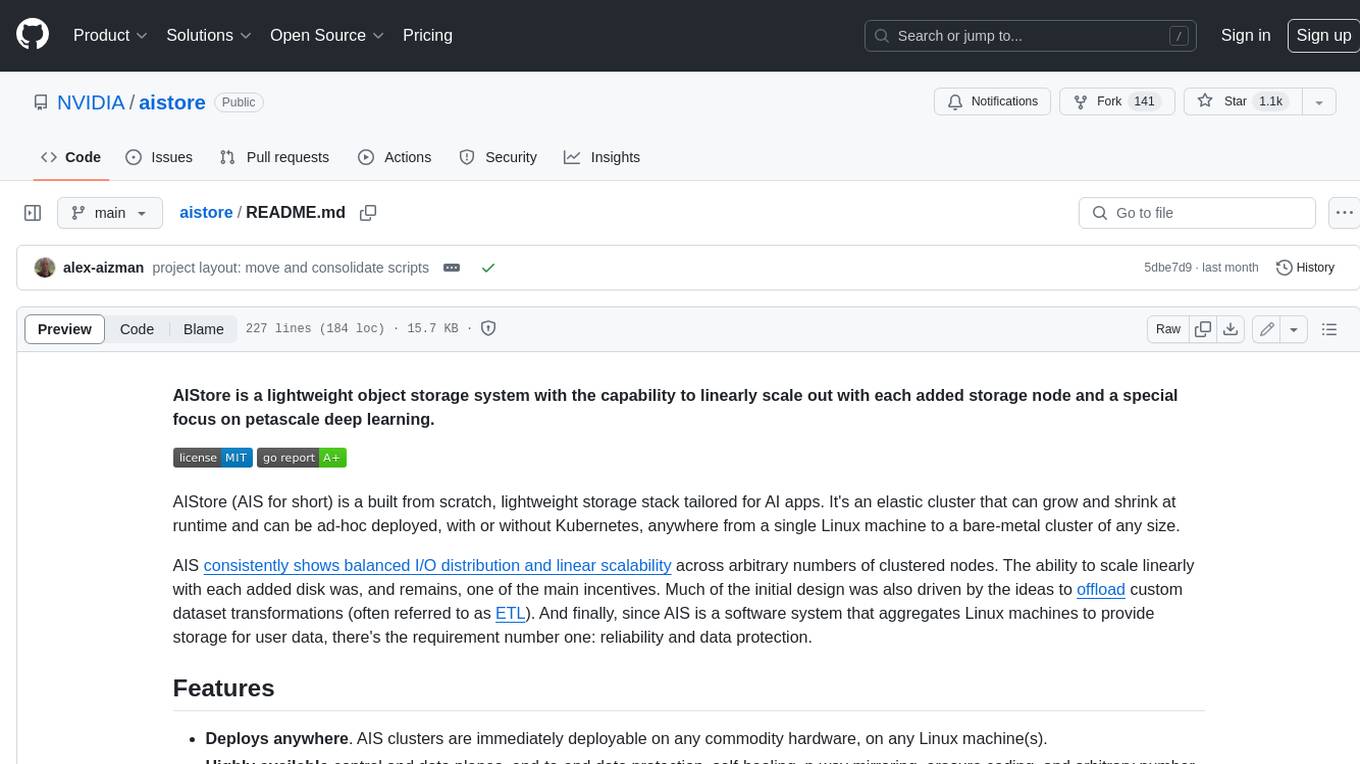
aistore
AIStore is a lightweight object storage system designed for AI applications. It is highly scalable, reliable, and easy to use. AIStore can be deployed on any commodity hardware, and it can be used to store and manage large datasets for deep learning and other AI applications.
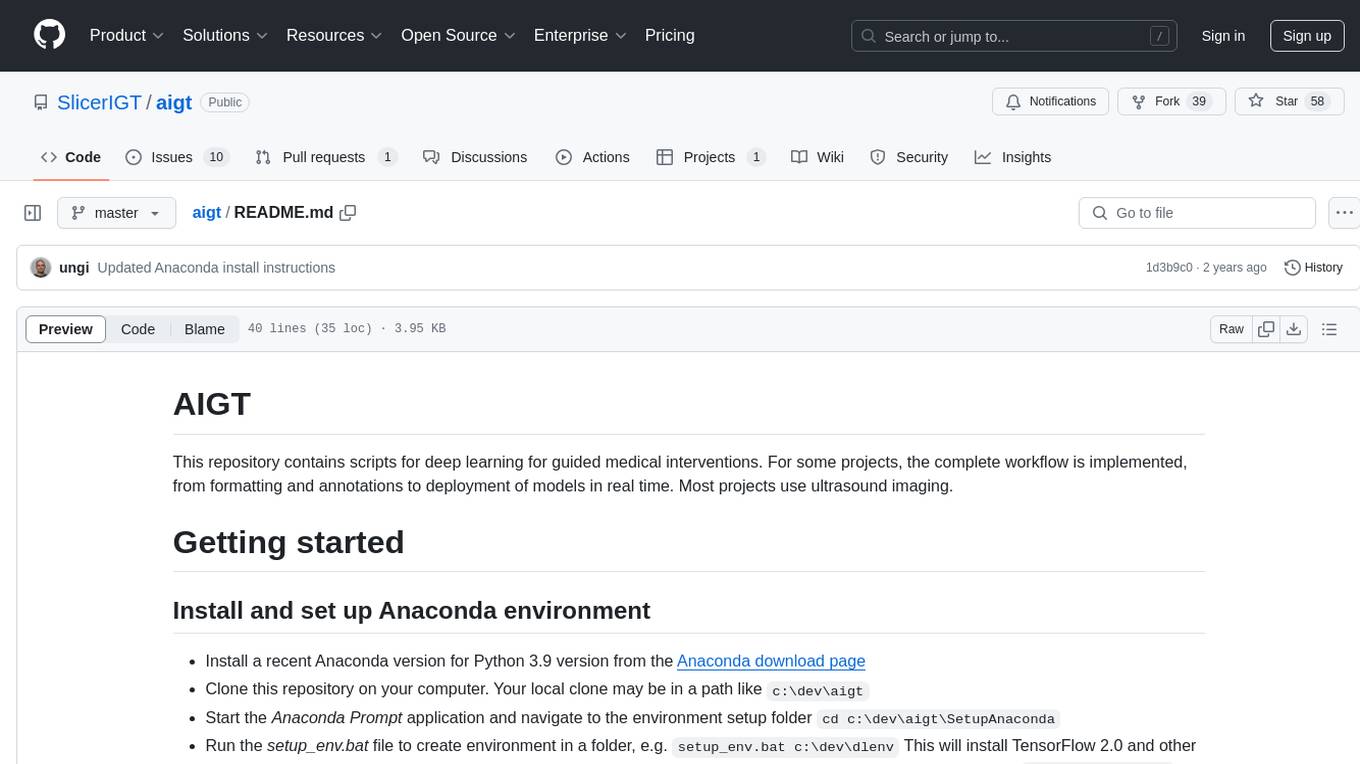
aigt
AIGT is a repository containing scripts for deep learning in guided medical interventions, focusing on ultrasound imaging. It provides a complete workflow from formatting and annotations to real-time model deployment. Users can set up an Anaconda environment, run Slicer notebooks, acquire tracked ultrasound data, and process exported data for training. The repository includes tools for segmentation, image export, and annotation creation.
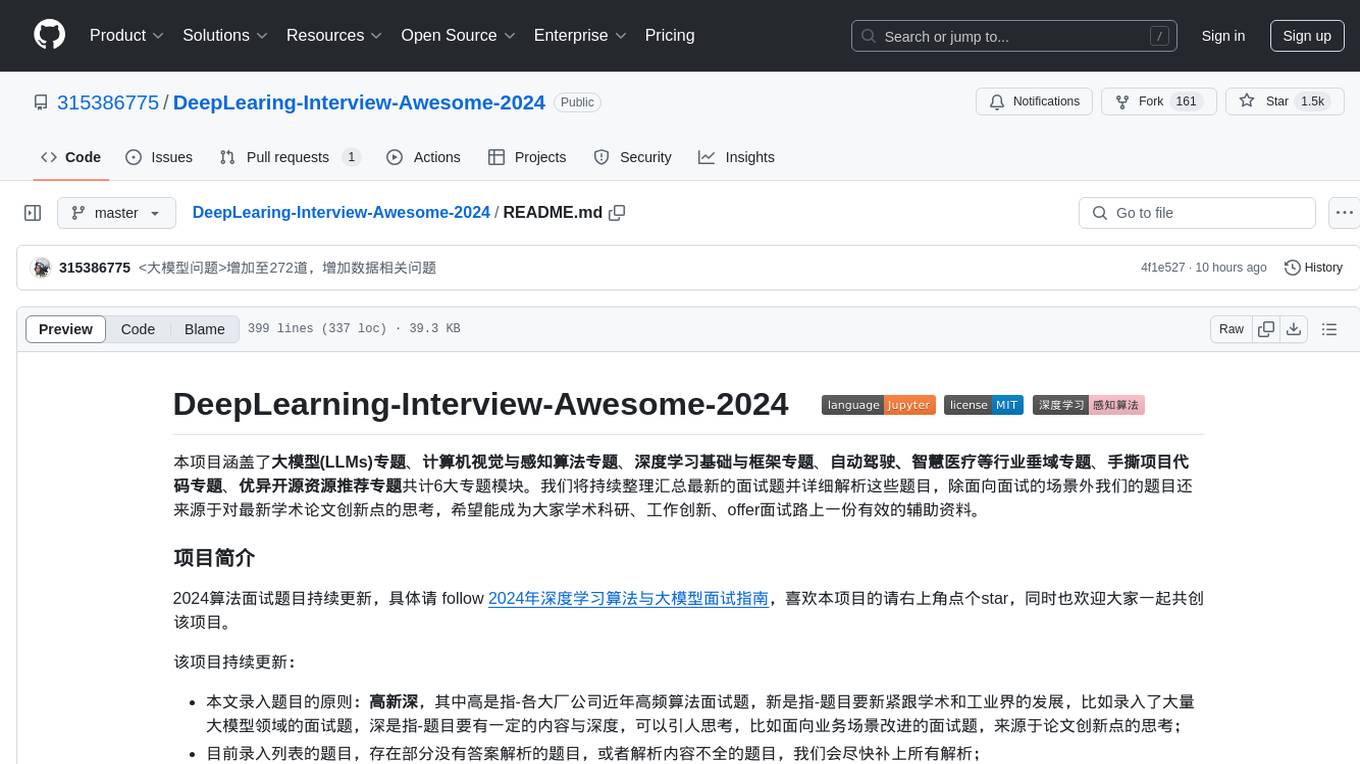
DeepLearing-Interview-Awesome-2024
DeepLearning-Interview-Awesome-2024 is a repository that covers various topics related to deep learning, computer vision, big models (LLMs), autonomous driving, smart healthcare, and more. It provides a collection of interview questions with detailed explanations sourced from recent academic papers and industry developments. The repository is aimed at assisting individuals in academic research, work innovation, and job interviews. It includes six major modules covering topics such as large language models (LLMs), computer vision models, common problems in computer vision and perception algorithms, deep learning basics and frameworks, as well as specific tasks like 3D object detection, medical image segmentation, and more.
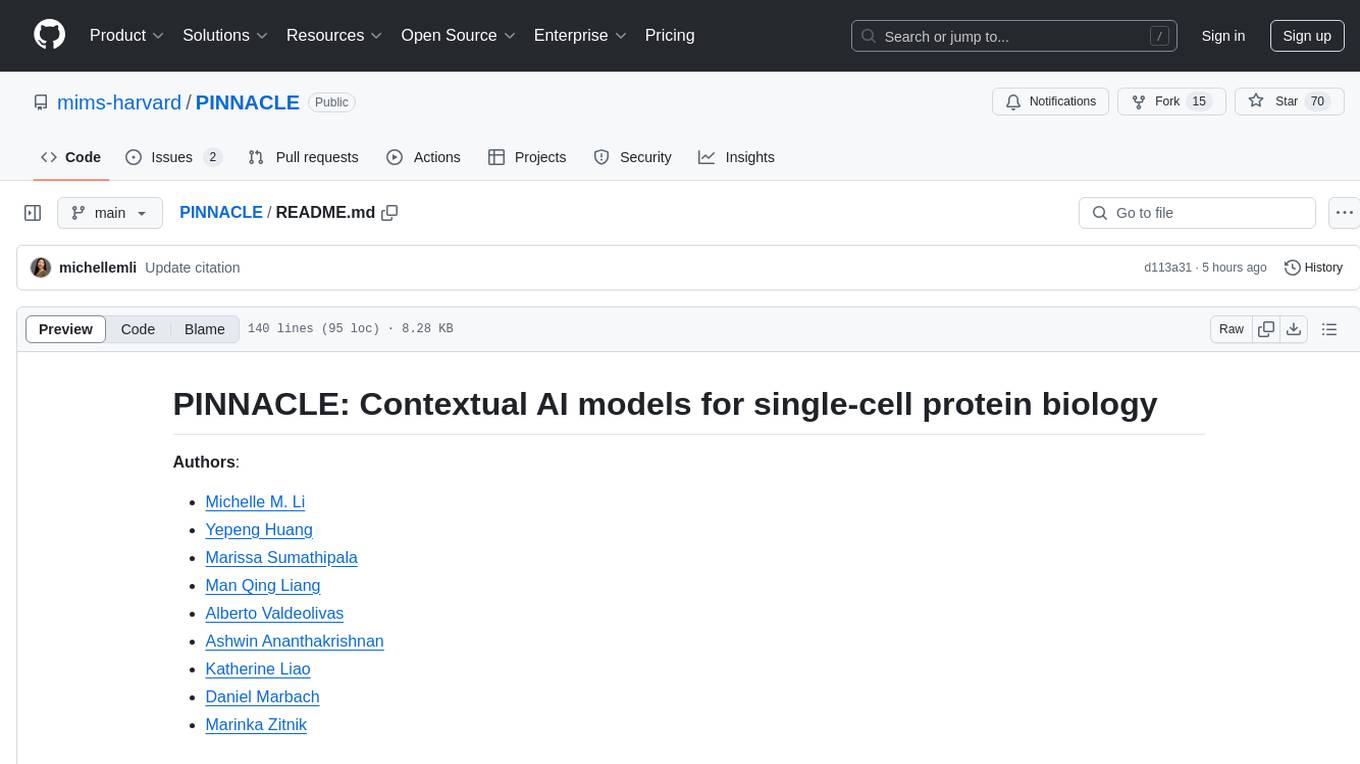
PINNACLE
PINNACLE is a flexible geometric deep learning approach that trains on contextualized protein interaction networks to generate context-aware protein representations. It provides protein representations split across various cell-type contexts from different tissues and organs. The tool can be fine-tuned to study the genomic effects of drugs and nominate promising protein targets and cell-type contexts for further investigation. PINNACLE exemplifies the paradigm of incorporating context-specific effects for studying biological systems, especially the impact of disease and therapeutics.
For similar jobs
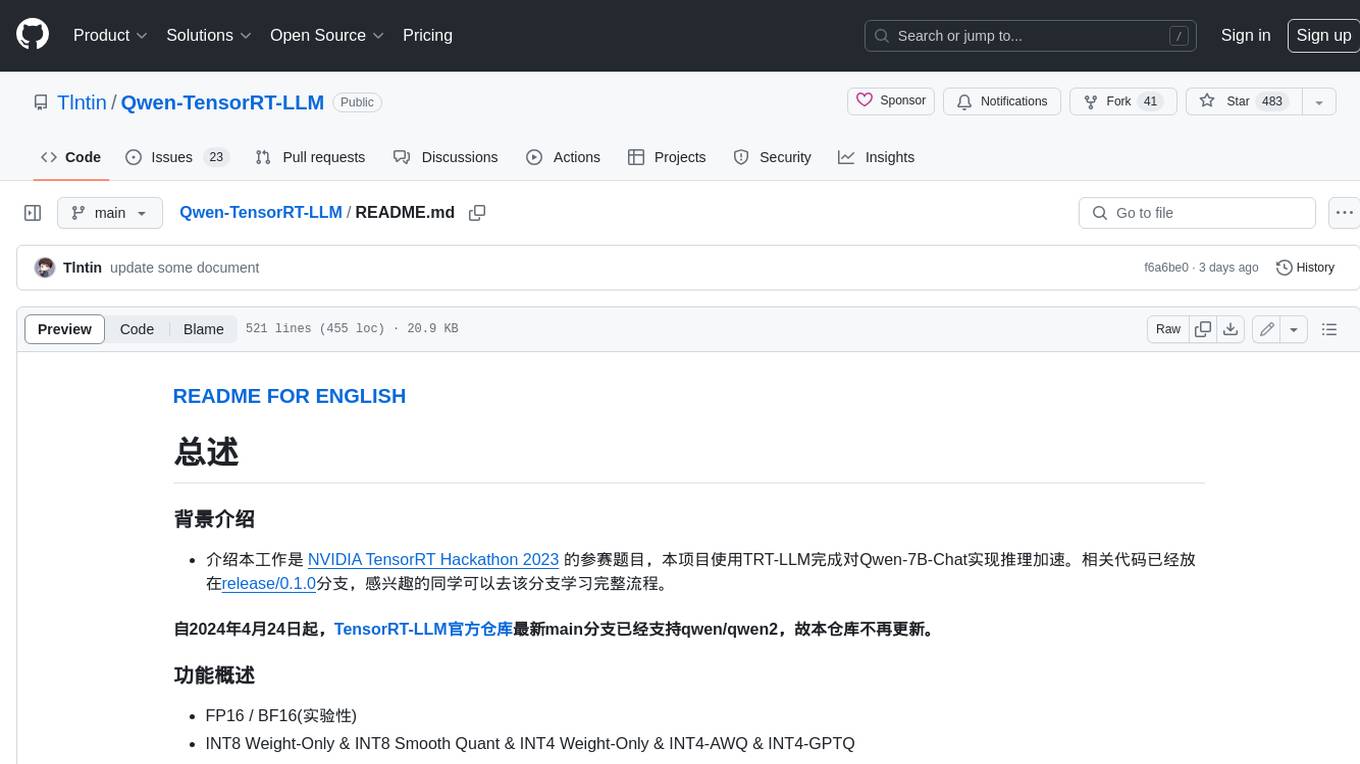
Qwen-TensorRT-LLM
Qwen-TensorRT-LLM is a project developed for the NVIDIA TensorRT Hackathon 2023, focusing on accelerating inference for the Qwen-7B-Chat model using TRT-LLM. The project offers various functionalities such as FP16/BF16 support, INT8 and INT4 quantization options, Tensor Parallel for multi-GPU parallelism, web demo setup with gradio, Triton API deployment for maximum throughput/concurrency, fastapi integration for openai requests, CLI interaction, and langchain support. It supports models like qwen2, qwen, and qwen-vl for both base and chat models. The project also provides tutorials on Bilibili and blogs for adapting Qwen models in NVIDIA TensorRT-LLM, along with hardware requirements and quick start guides for different model types and quantization methods.
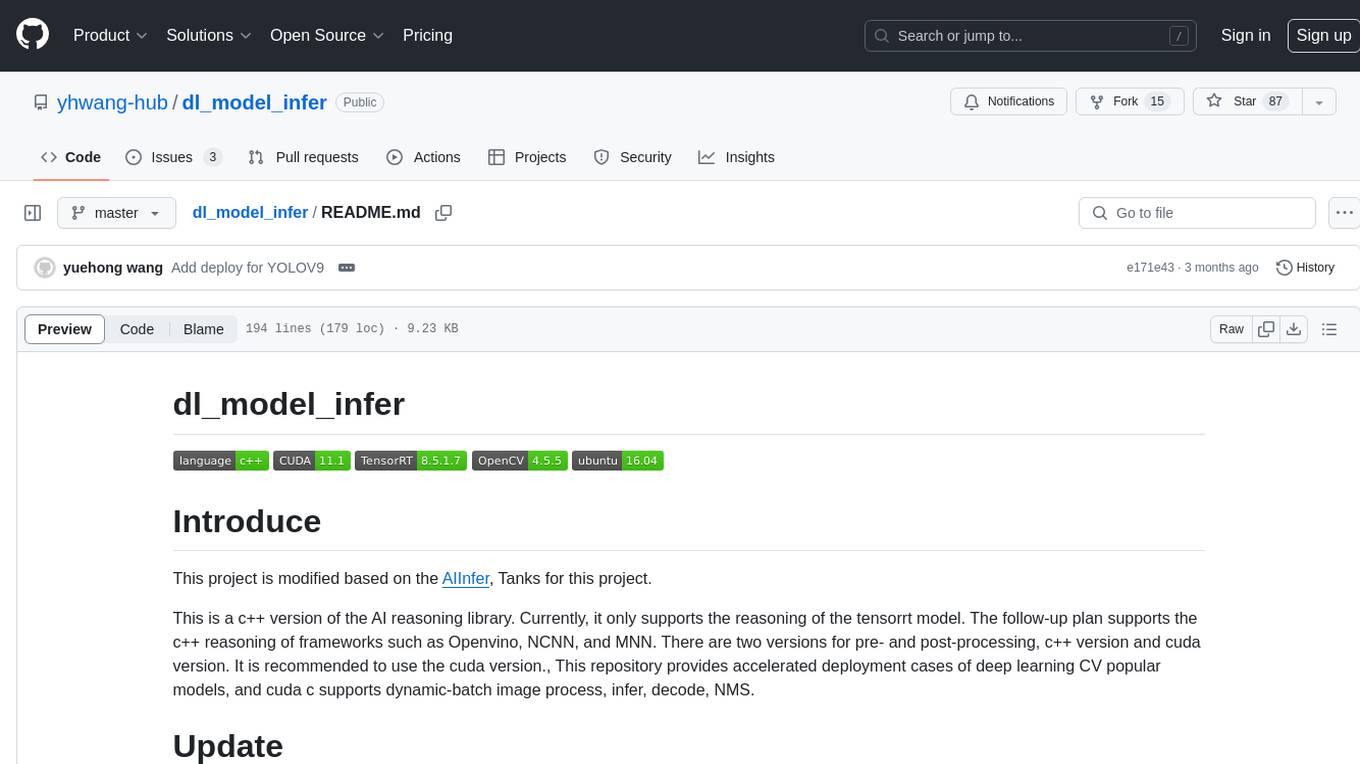
dl_model_infer
This project is a c++ version of the AI reasoning library that supports the reasoning of tensorrt models. It provides accelerated deployment cases of deep learning CV popular models and supports dynamic-batch image processing, inference, decode, and NMS. The project has been updated with various models and provides tutorials for model exports. It also includes a producer-consumer inference model for specific tasks. The project directory includes implementations for model inference applications, backend reasoning classes, post-processing, pre-processing, and target detection and tracking. Speed tests have been conducted on various models, and onnx downloads are available for different models.
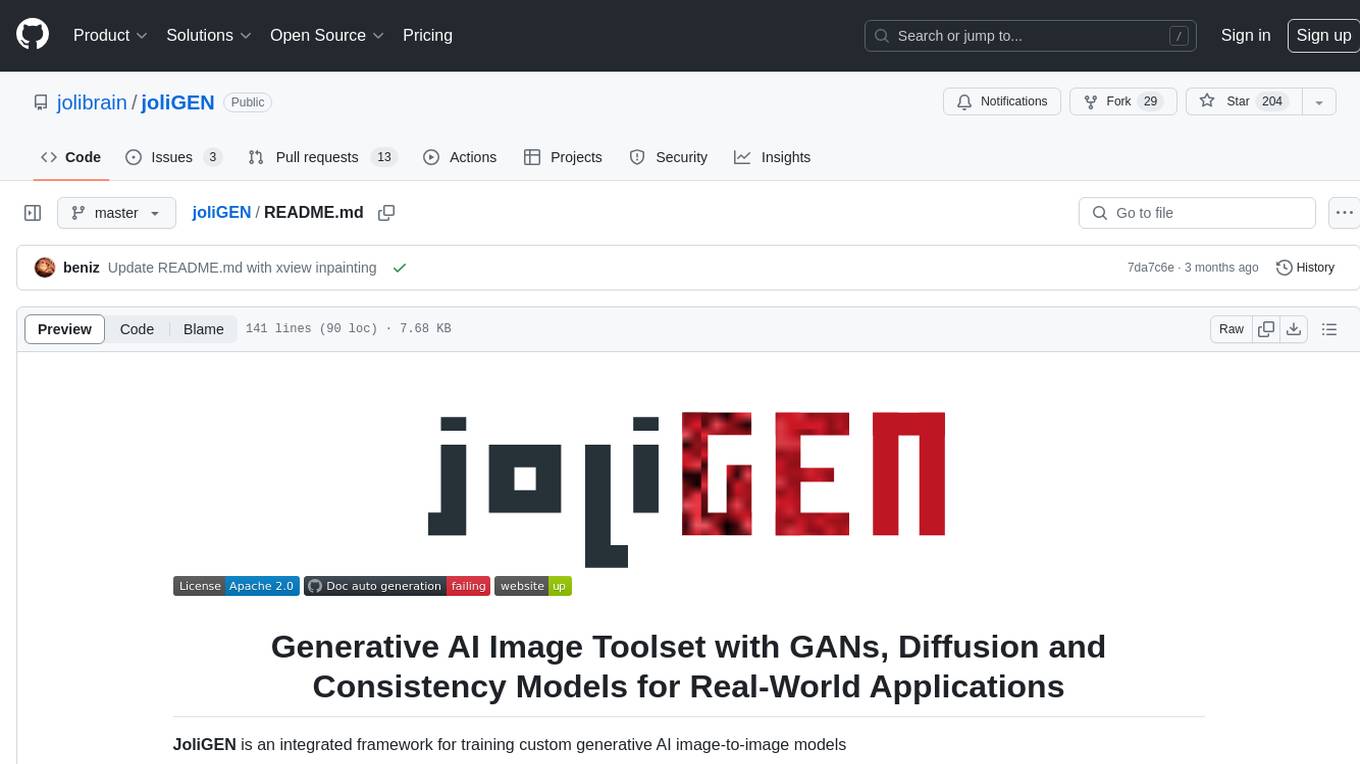
joliGEN
JoliGEN is an integrated framework for training custom generative AI image-to-image models. It implements GAN, Diffusion, and Consistency models for various image translation tasks, including domain and style adaptation with conservation of semantics. The tool is designed for real-world applications such as Controlled Image Generation, Augmented Reality, Dataset Smart Augmentation, and Synthetic to Real transforms. JoliGEN allows for fast and stable training with a REST API server for simplified deployment. It offers a wide range of options and parameters with detailed documentation available for models, dataset formats, and data augmentation.
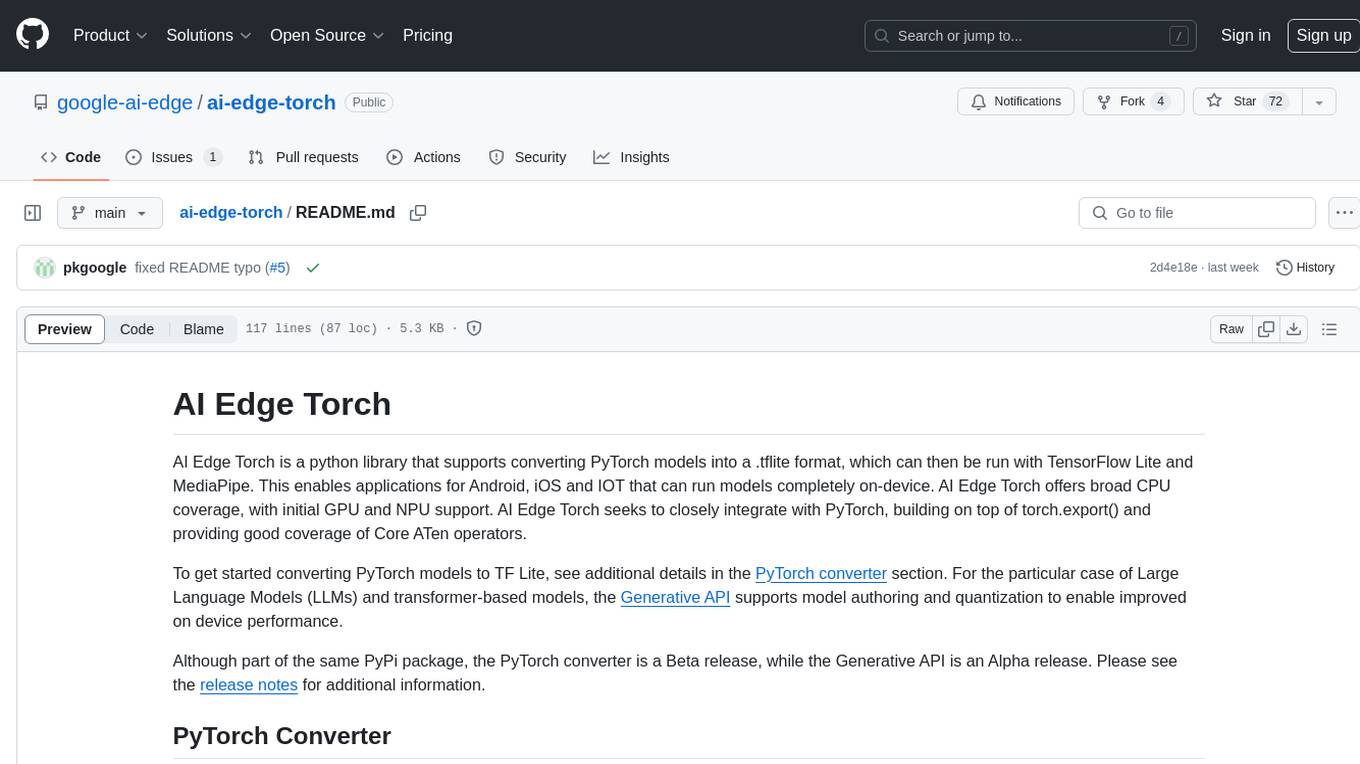
ai-edge-torch
AI Edge Torch is a Python library that supports converting PyTorch models into a .tflite format for on-device applications on Android, iOS, and IoT devices. It offers broad CPU coverage with initial GPU and NPU support, closely integrating with PyTorch and providing good coverage of Core ATen operators. The library includes a PyTorch converter for model conversion and a Generative API for authoring mobile-optimized PyTorch Transformer models, enabling easy deployment of Large Language Models (LLMs) on mobile devices.
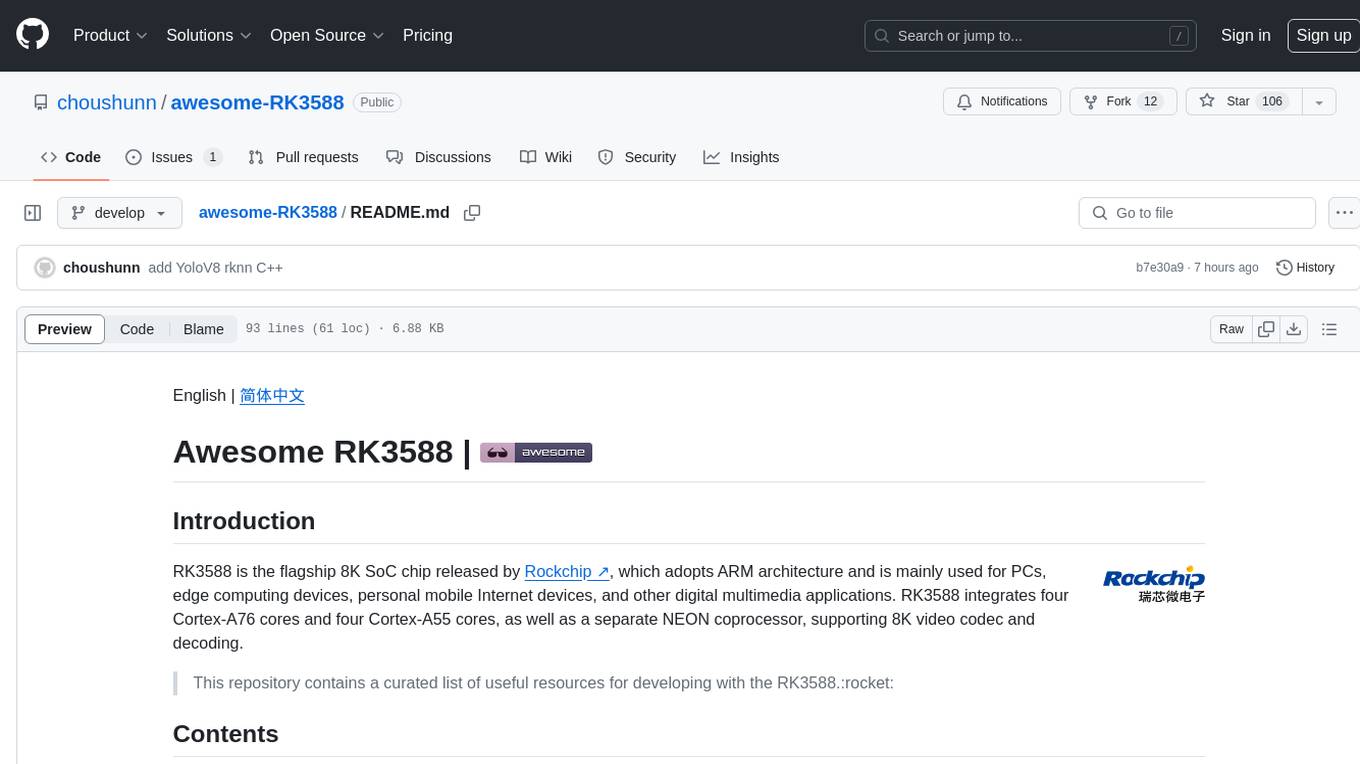
awesome-RK3588
RK3588 is a flagship 8K SoC chip by Rockchip, integrating Cortex-A76 and Cortex-A55 cores with NEON coprocessor for 8K video codec. This repository curates resources for developing with RK3588, including official resources, RKNN models, projects, development boards, documentation, tools, and sample code.

cl-waffe2
cl-waffe2 is an experimental deep learning framework in Common Lisp, providing fast, systematic, and customizable matrix operations, reverse mode tape-based Automatic Differentiation, and neural network model building and training features accelerated by a JIT Compiler. It offers abstraction layers, extensibility, inlining, graph-level optimization, visualization, debugging, systematic nodes, and symbolic differentiation. Users can easily write extensions and optimize their networks without overheads. The framework is designed to eliminate barriers between users and developers, allowing for easy customization and extension.
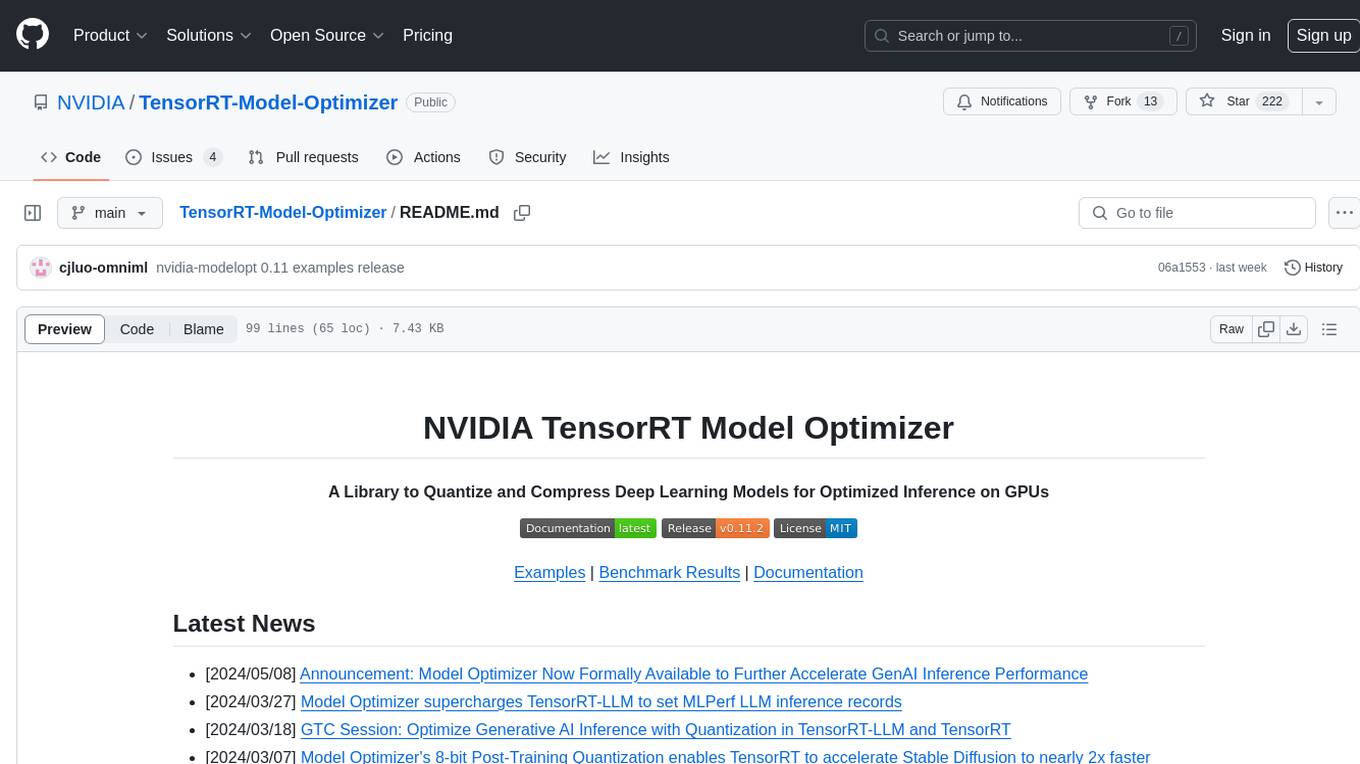
TensorRT-Model-Optimizer
The NVIDIA TensorRT Model Optimizer is a library designed to quantize and compress deep learning models for optimized inference on GPUs. It offers state-of-the-art model optimization techniques including quantization and sparsity to reduce inference costs for generative AI models. Users can easily stack different optimization techniques to produce quantized checkpoints from torch or ONNX models. The quantized checkpoints are ready for deployment in inference frameworks like TensorRT-LLM or TensorRT, with planned integrations for NVIDIA NeMo and Megatron-LM. The tool also supports 8-bit quantization with Stable Diffusion for enterprise users on NVIDIA NIM. Model Optimizer is available for free on NVIDIA PyPI, and this repository serves as a platform for sharing examples, GPU-optimized recipes, and collecting community feedback.

depthai
This repository contains a demo application for DepthAI, a tool that can load different networks, create pipelines, record video, and more. It provides documentation for installation and usage, including running programs through Docker. Users can explore DepthAI features via command line arguments or a clickable QT interface. Supported models include various AI models for tasks like face detection, human pose estimation, and object detection. The tool collects anonymous usage statistics by default, which can be disabled. Users can report issues to the development team for support and troubleshooting.
